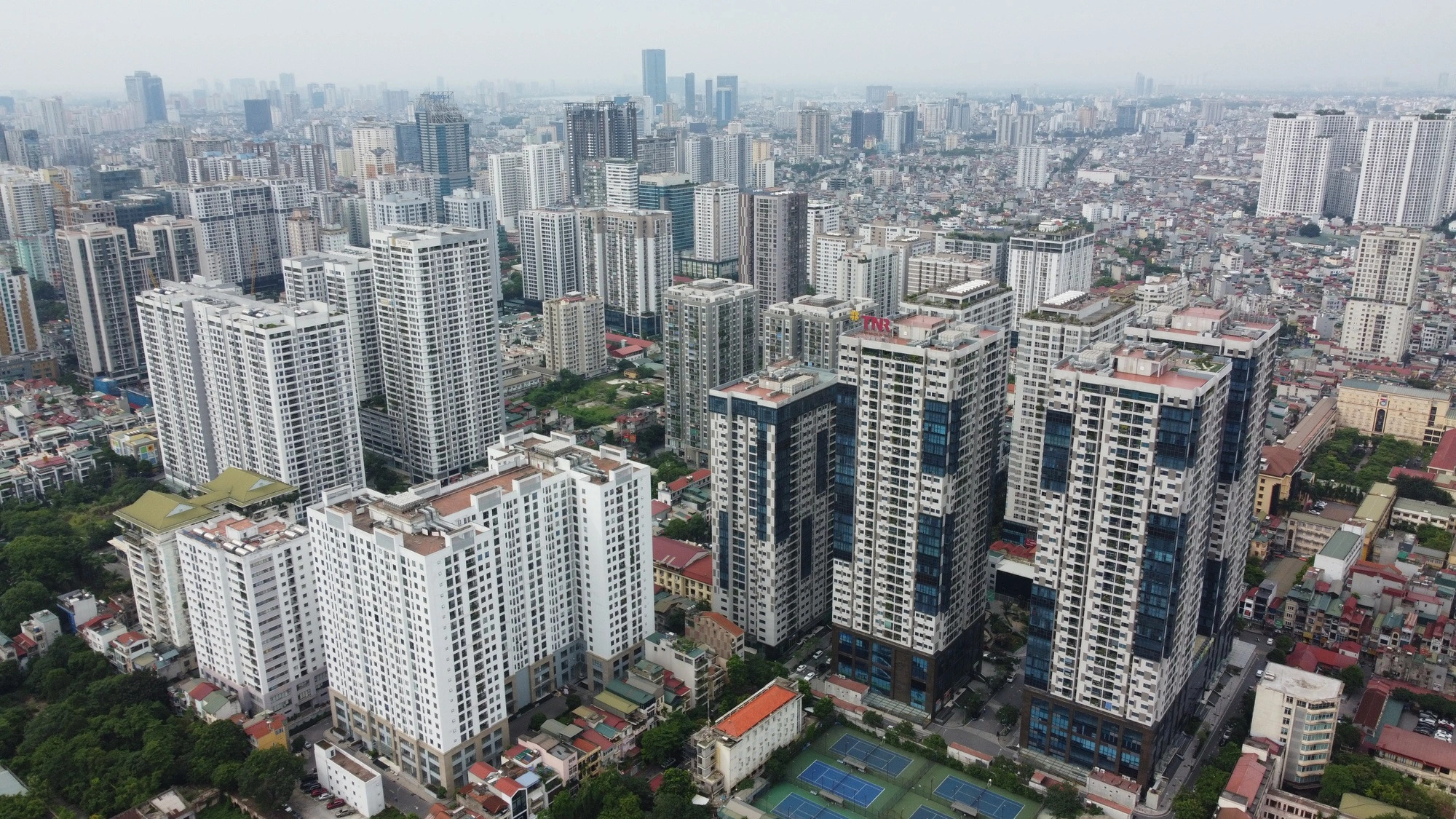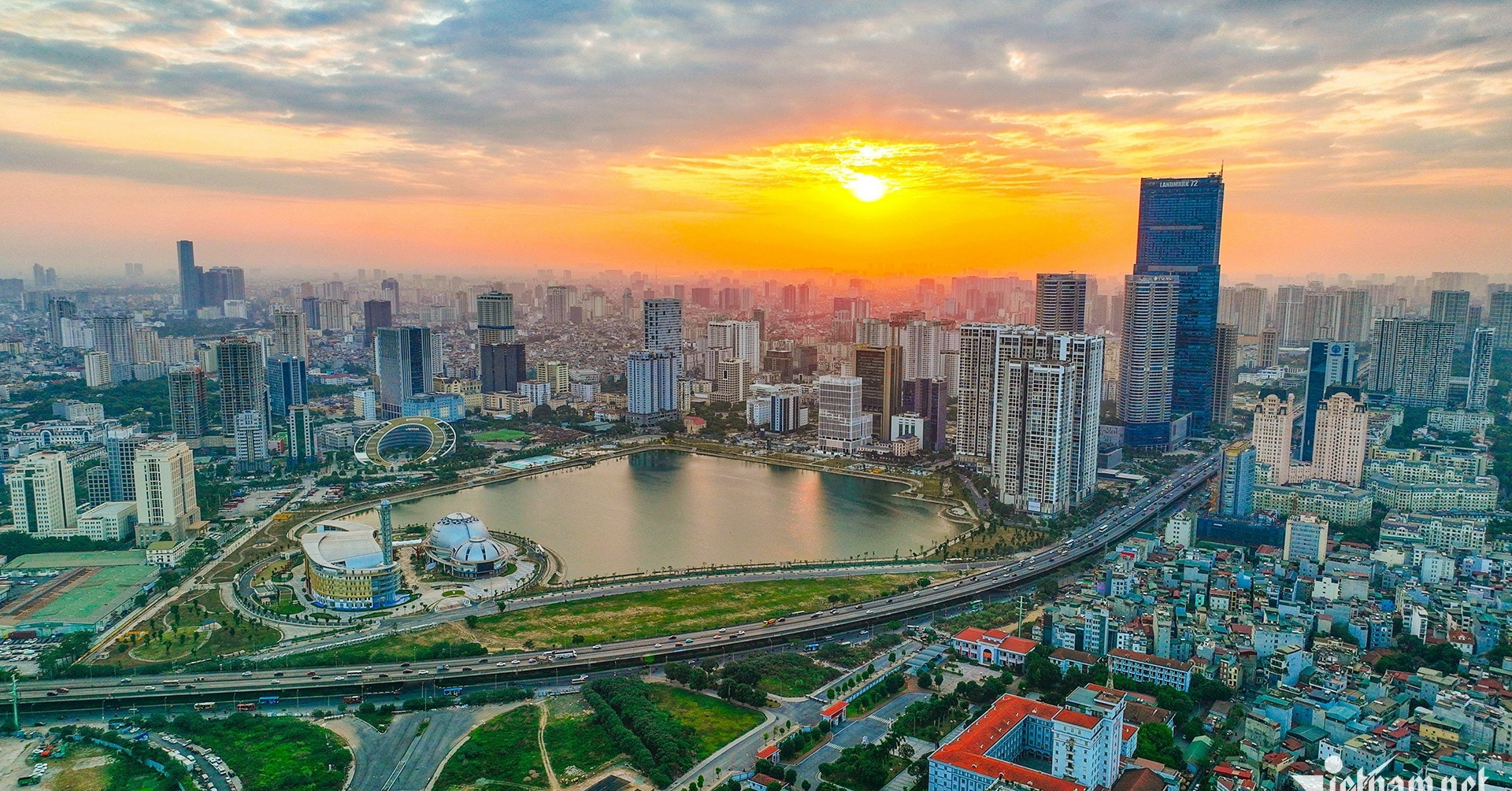Minimum 45M VND Income Needed to Buy an Apartment in Hanoi
According to the Vietnam Association of Realtors (VARS), persistently high real estate prices have placed significant financial pressure on homebuyers in Hanoi. To afford an apartment in the city, buyers now need a minimum monthly income ranging from 45 million to 210 million VND, depending on the specific district and location. This steep financial requirement far exceeds the earnings of most households, making homeownership an increasingly distant dream for many residents.

Rapidly Escalating Apartment Prices in 2024
The 2024 Real Estate Market Report by the Ministry of Construction confirms that apartment prices in major urban areas have risen sharply compared to 2023, establishing a new pricing benchmark across all market segments.
- The affordable segment, which previously had prices below 30 million VND/m², has now surged to 45 million VND/m².
- The mid-range segment, once priced between 30 – 45 million VND/m², has now increased to from 45 to 70 million VND/m².
- The high-end segment, which previously ranged from 50 – 70 million VND/m², has now climbed to 70 to 100 million VND/m².
- The ultra-luxury segment has officially entered the market, with certain projects commanding prices of 200 million VND/m².
The Ministry of Construction further noted that apartment prices in Hanoi have surged by 40 – 50% compared to 2023, with some projects experiencing even steeper price hikes. This rapid increase has further exacerbated affordability concerns, making it increasingly difficult for middle-income and even upper-middle-income households to buy property in the capital.

VARS highlighted that the widening gap between actual average income levels and escalating property prices has created a severe affordability crisis. For the vast majority of households with average or even above-average earnings, purchasing a home in Hanoi is not just a challenge but has become nearly unattainable. The disparity is particularly evident in central districts, where real estate prices have surged beyond what most working-class and middle-income families can realistically afford.
Research conducted by VARS further underscores the scale of this issue. Their data indicates that the minimum recommended income required to purchase an average-priced home in Hanoi is approximately 2.3 to 10 times higher than the city’s median household income. This stark difference illustrates the growing difficulty in achieving homeownership, forcing many prospective buyers to either seek alternative housing options in distant suburban areas or continue renting indefinitely.
The average income is not high enough
Specifically, according to data from the General Statistics Office, the average monthly income of workers in Hanoi in Q3 2024 reached 10.7 million VND. This figure highlights the financial reality for most working individuals in the capital, where salaries have not kept pace with the soaring costs of housing. Assuming a household of four people, with two working-age earners contributing to the family’s income, the total household earnings would be approximately 21.4 million VND per month. This income level, however, remains significantly lower than the amount required to afford homeownership in the city, leaving many families struggling to enter the property market.
“With the average primary apartment price in 2024 reaching 70 million VND per square meter, and newly launched projects priced from 60 million VND per square meter, buyers need a minimum monthly income ranging from 45 million to 210 million VND to afford an apartment in Hanoi, depending on the area,” VARS stated. This sharp increase in property prices has made it nearly impossible for households earning close to the city’s median income to consider purchasing a home, forcing them to either delay their homeownership plans or seek alternative housing solutions, such as renting or moving to suburban areas.
The affordability gap is particularly pronounced in central districts such as Hoàn Kiếm, Ba Đình, Đống Đa, Hai Bà Trưng, and Tây Hồ, where the cost of real estate has skyrocketed. In these prime locations, the disparity between the minimum required annual income for mortgage payments and the average household income has now reached ten figures. This means that even well-earning professionals and middle-class families are finding it increasingly difficult to secure property in these sought-after districts.
Even in traditionally more affordable suburban areas like Hà Đông, Bắc Từ Liêm, or Long Biên, the financial burden remains significant. While property prices in these districts are relatively lower compared to the city center, they are still only accessible to individuals or households with monthly earnings ranging from 40 to 60 million VND. This threshold is well beyond the reach of the average Hanoi worker, further emphasizing the challenges of homeownership in the current market.
VARS’ calculations are based on the average housing prices in each district, assuming that buyers can secure a bank loan covering 70% of the property’s value, with an average interest rate of 8% per year over a 20-year term. However, even with favorable financing options, the high initial down payment requirement and ongoing mortgage costs pose significant barriers to entry. As a result, the dream of owning a home in Hanoi is slipping further out of reach for many residents, intensifying concerns about housing affordability and long-term financial stability for families across the city.










